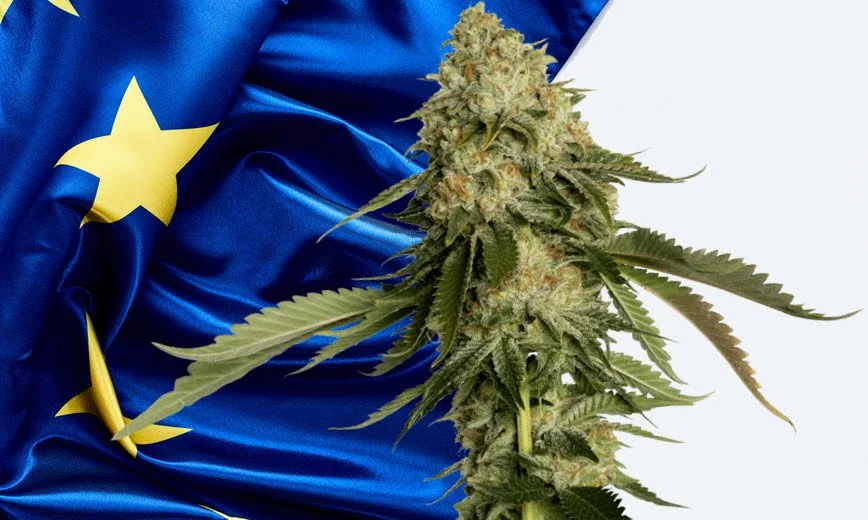In 2024, Europe presents a mosaic of approaches to cannabis regulation, reflecting the continent’s diverse cultural, legal, and social landscapes.
From countries with long-standing liberal policies to those taking cautious steps toward reform, understanding these diverse approaches is essential for anyone interested in the subject.
This insight of ours aims to elucidate the nuances of each nation’s stance, their legal frameworks, and the broader implications of their policies.

Source: elcapitanbrand.com
Contents
Germany
Germany represents a key example of evolving attitudes towards medical cannabis in Europe. Since 2017, doctors in Germany have been able to prescribe it for medical purposes, a significant shift acknowledging its therapeutic benefits.
Patients suffering from chronic pain, multiple sclerosis, and other serious conditions have benefited from this policy. Currently, there is growing discussion and political momentum in Germany around expanding these policies to include broader legalization.
The impact of medical cannabis legalization in Germany extends beyond patients to influence the broader healthcare system and pharmaceutical industry, setting a precedent for other European countries.
The Netherlands
The Netherlands, known for its liberal stance, has been at the forefront of the policy in Europe. The country’s famous “coffee shops” have been allowed to sell it under a policy of tolerance since the 1970s, although cannabis remains technically illegal under Dutch law.
This unique approach, often referred to as the “Dutch model,” involves regulated allowance of sale and use within certain parameters, while cultivation and wholesale remain prohibited. This model aims to separate the market from harder drugs and reduce the nuisance associated with illegal drug trade.
Despite its progressive stance, the Netherlands faces ongoing challenges, including addressing concerns related to tourism and public health, and the paradox of legal sales versus illegal production.

Source: reddit.com
Portugal
Portugal’s approach to cannabis and drug use in general is a standout in Europe. In 2001, Portugal decriminalized the possession and consumption of all drugs, including cannabis, for personal use. Instead of criminal prosecution, those found with drugs are referred to a “dissuasion commission” that can recommend treatment or impose fines.
This groundbreaking policy shift, primarily aimed at addressing public health issues related to drug use, has been credited with reducing drug-related deaths and HIV transmission rates. However, the production and distribution remain illegal.
The success of Portugal’s decriminalization model is often cited in global discussions about drug policy reform.
Spain
Spain offers a unique case in the European cannabis landscape with its “cannabis clubs.” These non-profit private clubs allow members to cultivate and consume cannabis in a shared space, exploiting a legal loophole where private consumption is not penalized. However, public consumption and trafficking remain illegal.
This model has led to a proliferation of clubs, especially in regions like Catalonia. Despite their popularity, these clubs operate in a legal gray area, often facing challenges from authorities. Spain’s model reflects the complex legal and social dynamics surrounding the subject, balancing individual freedoms with public health and legal considerations.
Italy
Italy’s approach to cannabis regulation is twofold, focusing on medical use and the industrial hemp industry. The Italian government permits the use for medical purposes, acknowledging its benefits in treating various conditions.
This has led to the establishment of government-controlled cultivation facilities to ensure a regulated supply of medical-grade cannabis. Additionally, Italy has legalized the cultivation of industrial hemp, leading to a burgeoning industry producing hemp-based products.
Despite these advancements, the recreational use of cannabis remains illegal, and the country continues to grapple with debates over further policy liberalization.

Source: harrisbricken.com
Other European Nations
Across Europe, other nations exhibit a variety of approaches to cannabis. For instance, Denmark has embarked on a trial program allowing the use of medical cannabis, while Switzerland allows the sale of low-THC products.
The Czech Republic stands out for its progressive medical cannabis policies and relatively liberal stance on personal possession. Each of these countries showcases different models ranging from medical-only use to limited decriminalization efforts, reflecting the diverse legal, cultural, and social attitudes towards cannabis in Europe.
The European Union’s Role in Cannabis Policy
The European Union (EU) plays a significant role in shaping the cannabis policies of its member states, though it allows considerable leeway in how each country regulates its use. The EU provides a framework for medical cannabis, setting standards for quality and safety.
However, when it comes to recreational use, member states have the freedom to chart their own course. This has led to a patchwork of policies across the EU, with each nation tailoring its approach to fit its unique context. The EU’s role is crucial in ensuring standardization in medical cannabis while respecting the sovereignty of its member states in making their own decisions regarding broader use.
Future Trends and Predictions
Current trends indicate a gradual shift towards more liberal policies, largely influenced by evolving public opinion, economic factors, and the observed benefits of medical cannabis programs. This shift is a response to the growing body of evidence supporting the therapeutic potential of cannabis, as well as a broader cultural movement towards the acceptance of cannabis as a part of society.

Source: leafly.com
The Expansion
One of the most prominent predictions for the near future is the expansion of medical cannabis programs across more European countries. As research continues to uncover the medicinal benefits in treating various conditions, countries that have been hesitant are likely to explore the possibility of integrating it into their healthcare systems.
This expansion will not only increase accessibility for patients in need but will also drive the growth of the medical cannabis industry, including pharmaceuticals, cultivation, and distribution networks.
Increased Research and Innovation
The burgeoning cannabis industry is poised to see increased research and innovation. As more countries embrace medical hemp, there will be a surge in scientific studies aimed at understanding the full spectrum of its therapeutic properties. This research will likely lead to innovation in cannabis-based treatments, cultivation methods, and product development, potentially making cannabis a more integrated part of medical treatment options.

Source: canva.com
The Bottom Line
The state of cannabis regulation in Europe in 2024 is a complex and varied picture, with each country exhibiting its unique approach.
From pioneers in liberal policies to nations just beginning to explore medical options, the European experience offers valuable lessons in balancing public health, legal considerations, and societal attitudes.
Understanding these diverse policies is crucial for stakeholders, policymakers, and the public as Europe continues to navigate the intricate path of regulation.
